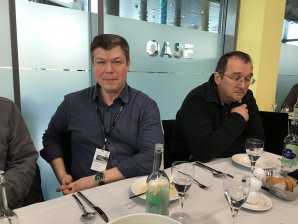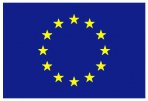Switzerland: PSI Hosted the High Pressure Cells kick-off meeting

At lunch time, Rustem Khassanov (right) reflects on the advice of Konstantin Kamenev (left).
Task 3 of the Sample Environment work package is to develop next generation pressure cells for neutron and muon sources. These will expand the range of pressures available for experiments at the facilities. In January 2016, PSI hosted the launch meeting for this task by bringing together the Sample Environment pressure cell teams with experts in high-pressure techniques, namely Konstantin Kamenev from the Centre for Science at Extreme Conditions (CSEC) at the University of Edinburgh and Stefan Klotz from the Institut de minéralogie, de physique des matériaux et de cosmochimie (IMPMC) in Paris.
At the meeting, PSI presented a review of the current capabilities of high-pressure techniques at the muon source. The Sample Environment teams of neutron facilities also listed the common problems they face with existing pressure cells. An intense and very fruitful discussion with experts then took place and future generations of cells for neutron and muon techniques were discussed.
But the expert help did not end there. Since the meeting, SINE2020 colleagues at PSI have been trained by Konstantin Kamenev in high pressure techniques; solved the issues they were having in their piston cell development and learned how to design and build new clamp cells that reach 50% higher pressure.
The high-pressure cell projects that form part of Task 7.3, and the facilities leading them, are:
- PSI: Muon spectroscopy piston cells
- ILL and STFC: Piston and anvil cells for both neutron and muon spectroscopy
- HZG: 700 bar hydrogen container for studying hydrogen storage materials
Follow up meetings dedicated to the task were also held at ISIS in May 2016, PSI in April 2017 and at CSEC in Edinburgh in January 2018. A third high-pressure expert, Burkhard Annighöfer (LLB), also participated in the discussions at Coimbra in September 2016.
Acknowledgements: Eddy Lelièvre-Berna, ILL
Back to The Road to the ESS
Other articles: 700 bar hydrogen container for studying hydrogen storage materials, Next-generation anvils for the Paris-Edinburgh cell, Sample Environment, Improving a piston-cylinder pressure cell for μSR experiments, An anvil cell for high pressure muon spectroscopy?, PSI




